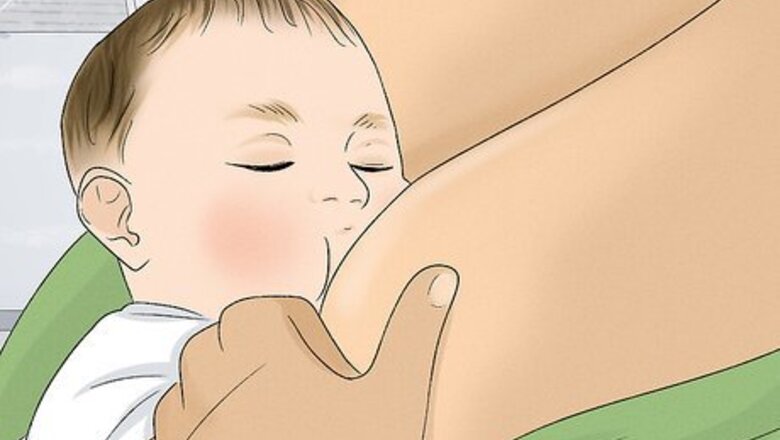
views
Infants and Babies
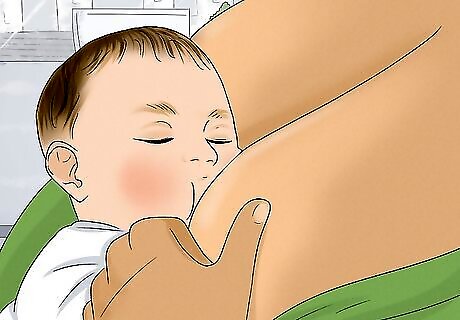
Meet your baby's physical needs first. In many cases, babies will cry because there’s something physically wrong—they’re hungry, their diaper is dirty, they have gas, or something else similar. Give your little one a quick examination to make sure all their needs are met. They might stop crying if you feed them, change their diaper, or burp them. Take a quick look over your baby to make sure they don’t have any cuts, scrapes, or sores. Your little one might be crying because they’re in pain.
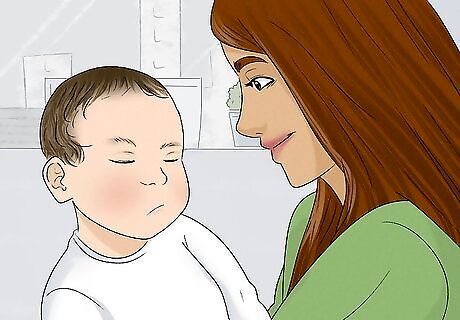
Carry or rock your baby so they calm down. Place your little one in a carrier or sling and move them around gently, keeping them close to your chest while they cry. Many babies love to be super close to their parents, and a gentle rocking motion can really help them calm down when they’re upset. Some babies also like being pat on their back. Place them on their side in the crib. Lightly pat your little one’s back until they fall asleep—at this point, you can set them on their back again. Some parents find that taking their baby for a walk or drive can be very calming.

Use the “Five S’s” to soothe your baby. If you can’t really pinpoint why your little one is upset, focus on making their environment as soothing and womb-like as possible. You can do this with the “Five S’s”—swaddling with a blanket, laying the baby on their side, shushing with white noise, gently swinging your baby, and letting your baby suck on a safe toy or pacifier. This is a great way to help your little one feel super calm and relaxed, especially if they aren’t crying for any particular reason. “Shushing” can be any kind of white noise that helps soothe your baby, like a vacuum cleaner, sound machine, or box fan.
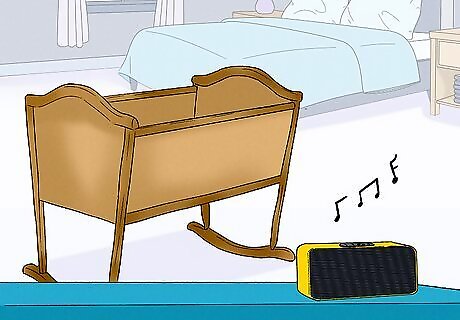
Move your baby to a relaxing environment if they can’t stop crying. Put on some relaxing music in the background, or give them a nice, warm bath to help them calm down. A simple massage, like rubbing or patting your little one’s back, can also do wonders for a crying baby. Different children will like different activities. Experiment with different toys and remedies when your little one gets upset, and see what sticks! If your baby seems a little overstimulated, move them to a quiet, dark space. This might help them calm down.
Toddlers and Young Kids
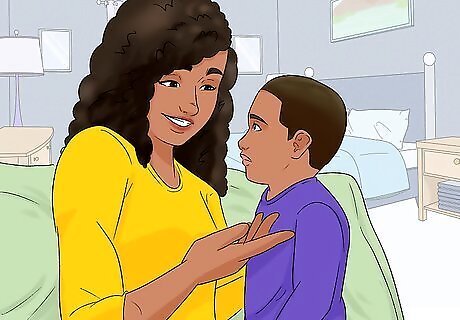
Let your child know that it’s okay to feel upset sometimes. Don’t shut down their feelings—instead, remind them that it’s okay to feel disappointed and that there are a ton of different solutions out there that can make them feel better. Your little one might calm down if they feel heard and acknowledged. For instance, you can say something like, “I’m sorry that I didn’t pick up your favorite snack while I was out shopping today. Would you mind eating what we have in the refrigerator until I’m able to go shopping again?”
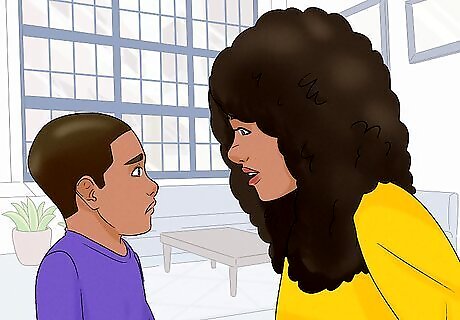
Encourage your kids to label their emotions when they feel upset. Teach them simple words to help pinpoint their feelings, like “mad” and “sad,” so they can really explain what they’re feeling and why. Help them form basic sentences about what they’re feeling, so you can get to the root of what’s going on. For instance, your child might say, “I’m mad because I have to pick up my toys” or “I’m sad because I can’t play with my friends today.” Stay calm and don't take it personally. When you get upset, your child will get more upset.

Help your child solve their issue instead of solving it yourself. Young children really love to be independent, and might get cranky or upset when they can’t figure out something on their own. Resist the urge to swoop in and do the difficult thing for them. Instead, walk your child through whatever’s confusing them, so they can do it on their own next time! For example, if your child is upset that they can’t brush their teeth, walk them through how to squeeze out the toothpaste and move the brush around. The next time, your child might be able to do it on their own!
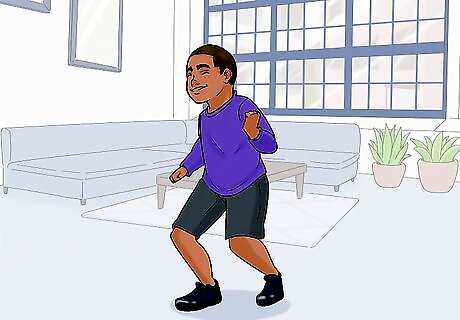
Teach your child to release their emotions in a healthy way. A big tantrum usually leaves your kid with a lot of energy. When your child is feeling really upset, encourage them to dance around, run outside, or do a few jumping jacks. If your little one is more creative, offer them some drawing tools and let them draw out why they’re feeling upset. Coping mechanisms should be a safe alternative for feeling upset. Don’t let your little one punch the walls or do anything to hurt themselves or your home.
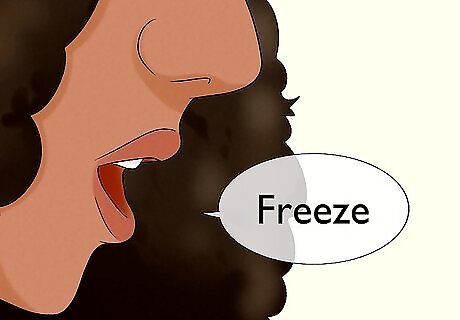
Say “freeze” if your child is overwhelmed to distract them. Saying the word “freeze” helps hit the pause button on your child’s train of thought. Instead of crying, they might take a moment to think and calm down. As your little one starts to relax, encourage them to take deep breaths, which will help them calm down. For instance, if your child gets upset that they dropped their favorite toy on the ground, say “freeze” before they start getting upset. This might help “reset” your child’s feelings and prevent an unwanted meltdown. Introduce "quiet time" where you both move to an area of your kid's bedroom or the front room with soft music, pillows, squishy toys and coloring. That way, you both get a chance to take a step back and calm down.

Lower the noise in the room if your child is overstimulated. Some kids cry because there’s way too much going on at once, like a lot of loud noises. See if you can shut off the TV, close an open window, or do something else to make the environment a little less overstimulating and overwhelming. If your little one is still feeling upset, guide them to their bedroom so they can calm down in a safe, quiet space. You can also invite your child to do something calming with you, like solve a puzzle, relax on the floor, or sing a few songs together. This might help them feel calmer in the moment, and stop their crying.
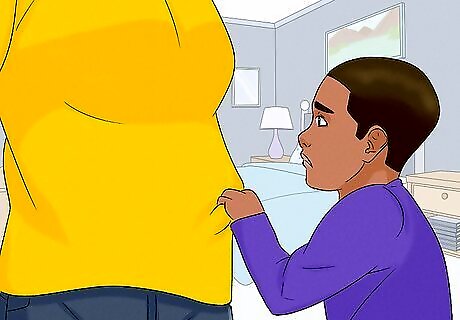
Teach your child how to ask for things nicely if they whine a lot. Take 2 recordings on your phone—one of your child whining, and another of your child asking for something politely. When your child starts throwing a tantrum, play back both clips for them. Remind them that whining and getting upset isn’t acceptable, and asking for something nicely is the best way to go. Saying “ask nicely” doesn’t really mean much if your child doesn’t know how to ask for something nicely.

Let your child know that throwing tantrums isn’t okay. If your little one is whining about something they should be doing, like a chore, let them know what will happen if they continue complaining. If they don’t stop whining, follow through with your statement. Over time, they’ll start to realize that their actions have consequences. For example, if a child starts crying because they don’t want to eat their vegetables, tell them that they won’t get dessert if they keep throwing a fit. If a child refuses to pick up their toys, tell them that they won’t be able to play with their toys after lunch.

















Comments
0 comment